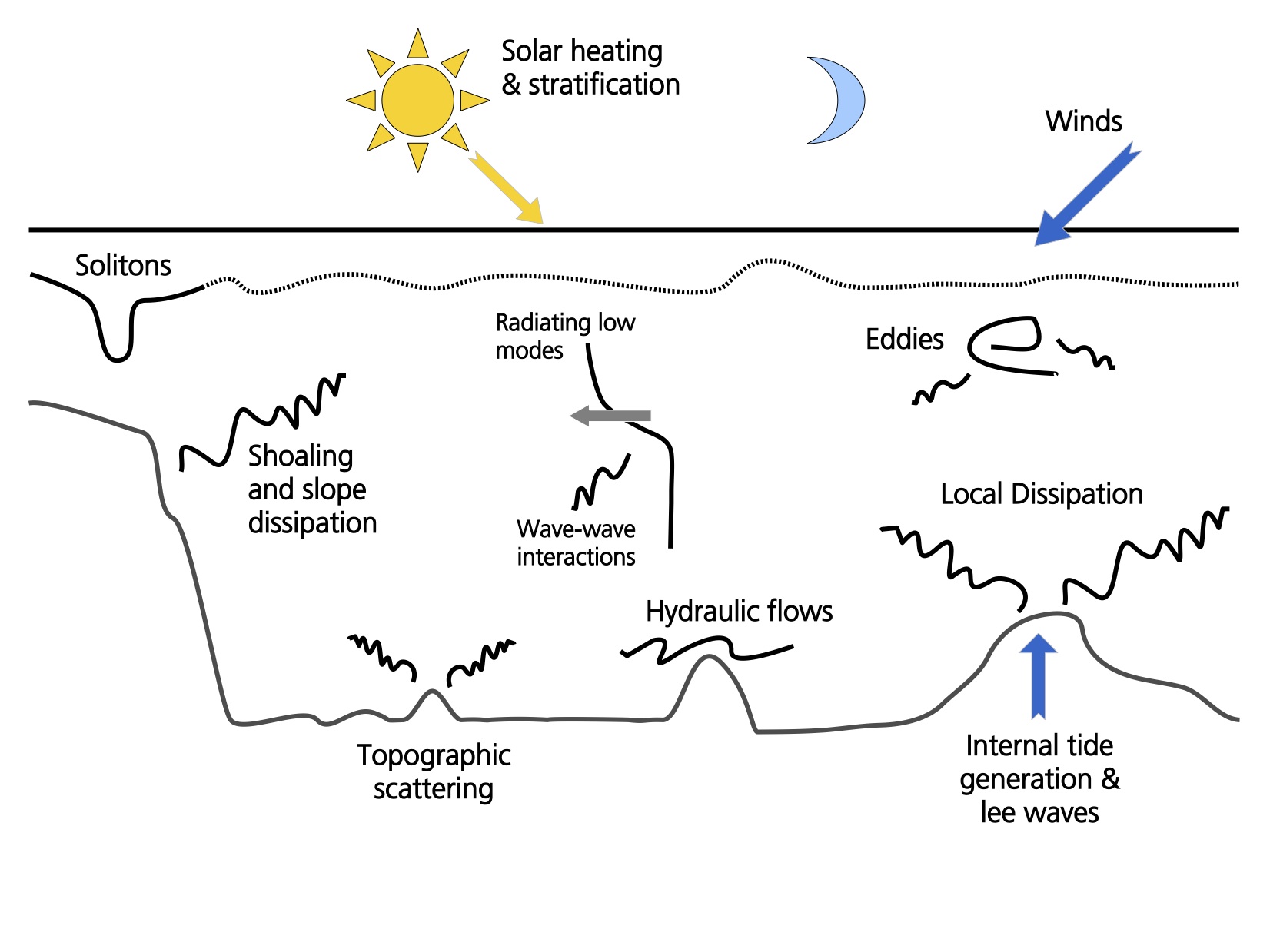work in progress
Here we detail several projects underway as part of the CPT to develop better paramterizations of diapycnal mixing for use in climate models. Most work to date has focused on turbulence driven by breaking internal waves. Internal waves in the ocean are thought to be primarily generated by barotropic tidal flow over topography (producing internal tides) and time-variable wind stress (producing near-inertial internal waves). Internal waves may also be generated by geostrophic adjustment or mesoscale flow over topography, although those processes are less understood. With either tide or wind generation, some energy is dissipated locally (e.g. near rough topography for internal tides or in the upper ocean under storm tracks), which produce global mixing patterns that mirror internal wave generation maps. We dub this the "Nearfield Problem". Yet some of the energy escapes in the form of propagating low-mode internal waves, which can be seen propagating thousands of kilometers in altimetric data. These "Farfield" waves may break by scattering off further rough topography, nonlinearly interacting with an ambient internal wave field, or crasing into distant continental slopes.
For further details of both nearfield and farfield wave breaking physics and paramterizations, follow the links to the right.
| Figure 1: Cartoon
schematic of generation and dissipation processes for internal waves in
the ocean. Credit: Amy Waterhouse. |
 |
Comments or inquiries please contact Dr. Jennifer MacKinnon [jmackinn at ucsd dot edu]
 |
We gratefully acknowledge funding from
NSF and NOAA |
 |